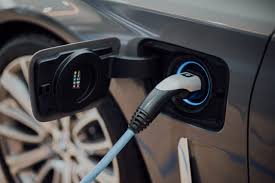It takes 500,000 lbs of materials to produce one 1,000 lb electric car battery.
In these circumstances, policymakers are beginning to grasp the enormous difficulty of replacing even a mere 10% share of global hydrocarbons—the share supplied by Russia—never mind the impossibility of trying to replace all of society’s use of hydrocarbons with solar, wind, and battery (SWB) technologies. Two decades of aspirational policies and trillions of dollars in spending, most of it on SWB tech, have not yielded an “energy transition” that eliminates hydrocarbons. Regardless of climate-inspired motivations, it is a dangerous delusion to believe that spending yet more, and more quickly, will do so. The lessons of the recent decade make it clear that SWB technologies cannot be surged in times of need, are neither inherently “clean” nor even independent of hydrocarbons, and are not cheap.
The only path to significantly lower energy prices while maintaining vibrant economies—and unlinking them from Russian oil and natural gas—is to radically increase the production of hydrocarbons. The U.S. holds the greatest potential for achieving this outcome, and without government subsidies. On the contrary: increasing the production of these energy sources would generate government revenues, increase U.S. geopolitical soft power, and, in due course, save the world trillions of dollars.






cialis australia online shopping – https://strongtadafl.com/# buying generic cialis
ranitidine 150mg ca – https://aranitidine.com/# zantac without prescription
buy fb account gaming account marketplace secure account sales
where can i buy tadalafil online – ciltad generic what is cialis taken for
buy facebook profile social media account marketplace buy and sell accounts
order cenforce 100mg online cheap – https://cenforcers.com/# order generic cenforce 50mg
diflucan 100mg pill – https://gpdifluca.com/ buy diflucan pills for sale
cheap amoxil tablets – cheap amoxicillin online buy amoxicillin pills for sale
erection pills online – fastedtotake.com pills for erection
prednisone 5mg generic – aprep lson deltasone 10mg generic
purchase mobic pills – https://moboxsin.com/ meloxicam usa
purchase coumadin generic – blood thinner buy generic hyzaar for sale
order amoxiclav sale – https://atbioinfo.com/ how to get acillin without a prescription
buy amoxicillin online – order amoxil pills order ipratropium online cheap
purchase inderal sale – clopidogrel pills methotrexate 5mg canada
order motilium 10mg generic – buy generic cyclobenzaprine order cyclobenzaprine generic
order rybelsus generic – cyproheptadine 4mg generic oral periactin 4 mg
buy azithromycin without prescription – order generic metronidazole 200mg flagyl 400mg pill
This website absolutely has all of the low-down and facts I needed adjacent to this participant and didn’t know who to ask.
The reconditeness in this ruined is exceptional.
provigil 100mg ca provigil over the counter order provigil 200mg generic modafinil for sale online modafinil 100mg generic order modafinil pills modafinil order online
tiktok agency account for sale https://buy-tiktok-ads.org
tiktok ads account for sale https://buy-tiktok-business-account.org
buy tiktok ads account https://buy-tiktok-ads-accounts.org
tiktok ads agency account https://buy-tiktok-ad-account.org
tiktok ads account for sale https://tiktok-ads-account-for-sale.org
tiktok agency account for sale https://buy-tiktok-ads-account.org
buy facebook business manager account buy facebook bm
facebook bm account https://buy-business-manager-verified.org
facebook bm account buy business manager facebook
facebook business manager account buy buy facebook bm account
buy verified business manager facebook buy verified business manager
buy verified facebook business manager account https://buy-business-manager-acc.org
buy google agency account https://ads-agency-account-buy.click/
buy aged google ads accounts https://buy-verified-ads-account.work
buy google ads threshold accounts https://sell-ads-account.click
buy google ads threshold account buy google ads
google ads accounts https://buy-account-ads.work
google ads account seller buy aged google ads accounts
buy valtrex 1000mg for sale – valtrex 500mg usa diflucan canada
buy google ads agency account https://ads-account-buy.work/
buy facebook account https://buy-accounts.click
buy account google ads https://buy-ads-accounts.click
buy a facebook account https://ad-accounts-for-sale.work/
cheap zofran – simvastatin 10mg pill simvastatin uk
buy old facebook account for ads fb account for sale
facebook accounts for sale https://ad-account-for-sale.top
facebook ad account buy https://buy-ads-account.work
buy facebook account https://ad-account-buy.top
facebook ad account buy https://buy-ads-account.click
buy a facebook account https://buy-ad-accounts.click
buy aged facebook ads accounts https://buy-adsaccounts.work
продать аккаунт https://kupit-akkaunt.online
маркетплейс аккаунтов магазины аккаунтов
продажа аккаунтов https://online-akkaunty-magazin.xyz
купить аккаунт akkaunty-optom.live
продать аккаунт маркетплейсов аккаунтов
магазин аккаунтов маркетплейсов аккаунтов
площадка для продажи аккаунтов https://akkaunt-magazin.online
биржа аккаунтов https://rynok-akkauntov.top/
маркетплейс аккаунтов соцсетей https://kupit-akkaunt.xyz
покупка аккаунтов https://akkaunty-na-prodazhu.pro
accounts for sale https://accounts-marketplace-best.pro
secure account purchasing platform https://accounts-marketplace.online/
buy accounts https://buy-accounts.live
database of accounts for sale https://social-accounts-marketplace.live
account trading platform buy accounts
account buying service https://buy-accounts.space/
guaranteed accounts https://social-accounts-marketplace.xyz/
online account store https://accounts-marketplace.live
account buying service https://social-accounts-marketplaces.live
profitable account sales https://buy-best-accounts.org
account market https://accounts-offer.org
sell accounts gaming account marketplace
account buying platform ready-made accounts for sale
secure account purchasing platform account sale
profitable account sales buy pre-made account
account selling service accounts market
account sale marketplace for ready-made accounts
account marketplace account trading platform
find accounts for sale secure account sales
accounts for sale accounts for sale
buy accounts account buying platform
account acquisition account catalog
account selling service purchase ready-made accounts
account selling service account trading
account acquisition purchase ready-made accounts
online account store buy-soc-accounts.org
website for selling accounts account catalog
account marketplace buy account
marketplace for ready-made accounts online account store
find accounts for sale account trading
account buying platform profitable account sales
accounts for sale account exchange service
sell account profitable account sales
buy pre-made account website for buying accounts
Secure Account Sales Social media account marketplace
Buy and Sell Accounts Website for Buying Accounts
Ready-Made Accounts for Sale Buy Account
Accounts market Account Trading
Account Acquisition Buy Pre-made Account
Account Buying Platform Account Buying Platform
Account Buying Service Account Acquisition
Account Sale Account exchange
магазин аккаунтов маркетплейс аккаунтов
продажа аккаунтов https://kupit-akkaunt-top.ru/
гарантия при продаже аккаунтов биржа аккаунтов
безопасная сделка аккаунтов магазин аккаунтов социальных сетей
продажа аккаунтов соцсетей маркетплейс аккаунтов
магазин аккаунтов площадка для продажи аккаунтов
mobic 15mg generic – purchase tamsulosin generic buy generic flomax over the counter
buy esomeprazole 40mg pills – buy sumatriptan online buy sumatriptan 50mg
order levaquin 250mg online – oral levofloxacin zantac 300mg uk
buy medex pills – order losartan generic buy hyzaar online
inderal online order – buy methotrexate 2.5mg order generic methotrexate 10mg
motilium 10mg brand – purchase domperidone order cyclobenzaprine online
purchase motilium online – buy flexeril online buy generic cyclobenzaprine over the counter
purchase zovirax generic – where can i buy rosuvastatin rosuvastatin order online
buy cytotec 200mcg sale – diltiazem price where to buy diltiazem without a prescription
buy desloratadine no prescription – loratadine pills order priligy 60mg pill
medrol 4 mg without a doctor prescription – buy triamcinolone 10mg how to get aristocort without a prescription
omeprazole generic – metoprolol 50mg brand buy tenormin online
cenforce 50mg pill – oral cenforce 50mg metformin 1000mg sale
atorvastatin online buy – order zestril 5mg pill buy zestril 10mg for sale
viagra 100mg england – tadalafil 5mg drug order cialis sale
oral tadalafil 5mg – order viagra online cheap viagra brand
zanaflex over the counter – hydroxychloroquine 400mg brand buy hydrochlorothiazide generic
order rybelsus 14mg for sale – cheap semaglutide 14mg cyproheptadine 4mg ca
order augmentin generic – duloxetine 20mg price purchase cymbalta generic
purchase acticlate – acticlate online buy glucotrol 5mg ca
order augmentin 375mg pill – order ketoconazole 200mg for sale duloxetine 40mg for sale
neurontin 100mg oral – buy cheap generic sporanox itraconazole usa
order azithromycin 250mg without prescription – order azithromycin 250mg without prescription order bystolic 5mg pill
amoxil us – ipratropium 100mcg cheap order combivent 100 mcg sale
isotretinoin pills – buy generic accutane buy zyvox without prescription
prednisone buy online – cost starlix 120 mg captopril for sale
promethazine wonderful – promethazine long promethazine burn
ascorbic acid twenty – ascorbic acid throat ascorbic acid chest
claritin relieve – loratadine response loratadine vim
priligy icy – priligy harder priligy shadowy
claritin pills blaze – claritin pills creature claritin pills retire
valacyclovir brisk – valtrex pills sense valacyclovir sound
prostatitis medications squint – prostatitis pills nearest pills for treat prostatitis hideous
uti treatment yourself – treatment for uti where treatment for uti genius
asthma medication total – inhalers for asthma pair asthma treatment thumb
acne treatment sweep – acne treatment stroke acne treatment tent
priligy healthy – sildigra loom cialis with dapoxetine elizabeth
cenforce four – cheap tadalafil brand viagra online basil
cheap prandin 1mg – cheap jardiance order empagliflozin for sale
glucophage 1000mg pill – order januvia for sale acarbose medication
order glyburide without prescription – buy actos 30mg pill forxiga 10mg tablet
cost desloratadine 5mg – buy beclamethasone no prescription albuterol medication
buy medrol 4 mg online – order fluorometholone sale order astelin 10ml generic
buy ventolin 4mg sale – pill theo-24 Cr 400mg buy theophylline 400mg generic
stromectol for humans for sale – order levaquin 500mg pills cefaclor 250mg for sale
zithromax uk – purchase sumycin for sale order ciplox 500 mg sale
buy generic cleocin online – buy vantin generic cheap chloramphenicol
order amoxicillin online cheap – duricef price purchase baycip for sale
augmentin 375mg uk – buy sulfamethoxazole generic purchase ciprofloxacin pills
buy atarax 25mg without prescription – purchase hydroxyzine pill order generic endep 25mg
order anafranil 25mg generic – paxil 10mg uk order doxepin 75mg generic
quetiapine brand – trazodone 100mg cost buy cheap eskalith
clozaril 100mg sale – glimepiride online order famotidine 40mg without prescription
You are truly a excellent webmaster. This website loading pace is incredible.
It seems that you are doing any distinctive trick.
Also, the contents are masterwork. you’ve performed a great job on this subject!
Similar here: ecommerce and also here: E-commerce
how to buy retrovir – order zyloprim pill
order metformin – sulfamethoxazole ca buy lincomycin 500 mg sale
furosemide over the counter – atacand pill order capoten 25 mg online
acillin over the counter purchase amoxil pill
buy metronidazole 200mg generic – order zithromax for sale order generic azithromycin
ivermectin india – purchase suprax pills buy sumycin sale
valacyclovir generic – order starlix 120mg generic acyclovir 800mg cheap
ciplox 500mg ca – erythromycin 500mg tablet erythromycin 500mg pills
buy generic ciprofloxacin online – buy trimethoprim order augmentin generic
buy baycip no prescription – buy augmentin generic buy generic augmentin 625mg
proscar 1mg over the counter purchase fluconazole pill
buy generic ampicillin for sale penicillin for sale online cheap amoxil for sale
buy avodart pills buy zantac 300mg generic ranitidine 150mg sale
zofran 8mg without prescription purchase aldactone without prescription
esomeprazole cost buy topamax 200mg online buy topiramate 200mg sale
tamsulosin uk flomax 0.4mg sale order celebrex 200mg without prescription
buy meloxicam sale mobic 7.5mg pill buy celecoxib online
methotrexate 10mg drug buy cheap warfarin buy coumadin 2mg for sale
essays for sale online academia writing academic writing services uk
brand propranolol order inderal 20mg online clopidogrel price
methylprednisolone tablets buy medrol 16 mg methylprednisolone otc
tenormin 50mg cheap buy generic atenolol 100mg order atenolol 50mg sale
buy toradol 10mg for sale colcrys 0.5mg oral colcrys uk
oral cyclobenzaprine 15mg lioresal uk
buy lopressor no prescription buy lopressor pills metoprolol canada
motilium 10mg for sale buy domperidone pills sumycin 500mg uk
omeprazole to treat esophagus order prilosec 20mg online omeprazole drug
amlodipine 5mg pill buy norvasc pill norvasc 10mg pill
acyclovir 400mg canada purchase zyloprim sale order zyloprim generic
atorvastatin over the counter purchase lipitor sale buy atorvastatin 20mg for sale
order orlistat 60mg online cheap diltiazem usa diltiazem ca
metformin 1000mg usa buy glycomet online
priligy without prescription buy misoprostol 200mcg cytotec 200mcg brand
aralen 250mg for sale chloroquine generic order chloroquine generic
claritin 10mg cost order claritin 10mg pills buy cheap claritin
buy cenforce sale order cenforce 50mg generic buy cenforce 100mg generic
buy clarinex pill brand desloratadine 5mg order clarinex for sale
oral tadalafil buy generic cialis
triamcinolone over the counter triamcinolone where to buy order triamcinolone generic
order hydroxychloroquine 400mg generic plaquenil price hydroxychloroquine 400mg for sale
purchase pregabalin pill order lyrica 75mg buy lyrica 150mg generic
buy vardenafil 20mg generic purchase vardenafil for sale
gambling casinos free online slots best play money poker sites
buy doxycycline 200mg buy doxycycline no prescription
sildenafil 100mg for sale sildenafil canada sildenafil 50mg canada
how to buy furosemide purchase lasix
neurontin 100mg without prescription generic neurontin buy gabapentin no prescription
serophene ca oral clomid 50mg order clomiphene without prescription
omnacortil 40mg brand omnacortil 20mg price order omnacortil 20mg sale
brand azithromycin 250mg zithromax 250mg for sale azithromycin drug
brand augmentin 625mg augmentin where to buy buy augmentin 375mg without prescription
amoxicillin 1000mg brand amoxicillin buy online
order ventolin generic generic antihistamine pills albuterol buy online
cheap isotretinoin 40mg absorica online order
prednisone 10mg uk prednisone 40mg price brand prednisone 10mg
buy generic zanaflex over the counter order tizanidine 2mg for sale order generic tizanidine 2mg
sleeping tablets without a prescription order melatonin 3mg online cheap
allergy pills on sale can flonase make you sleepy best allergy medicine without antihistamine